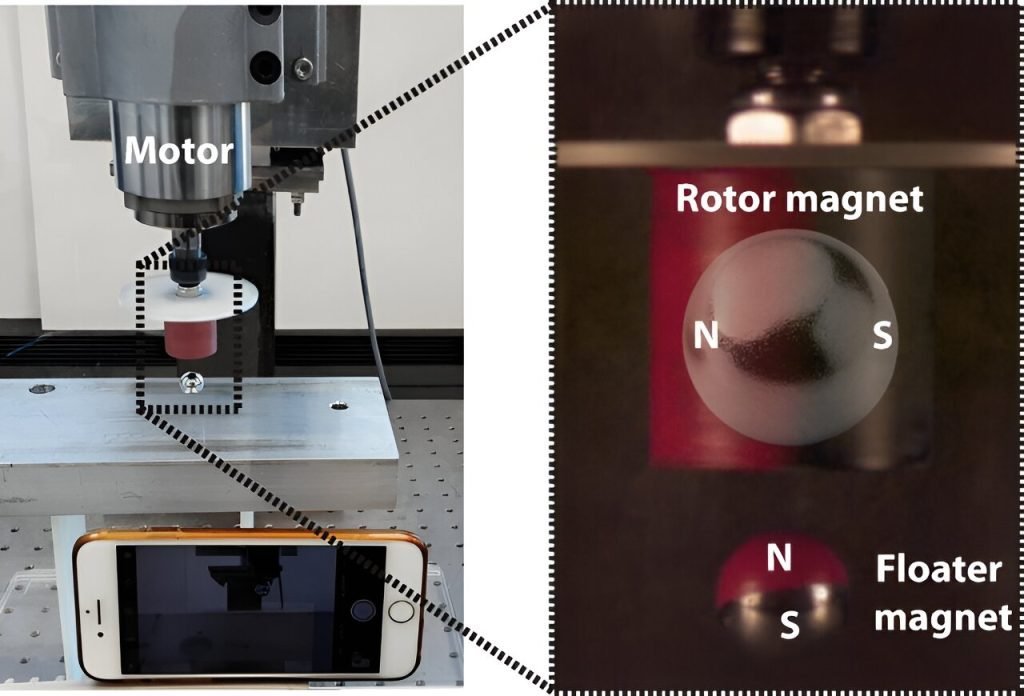Physicists at the Technical University of Denmark have successfully unraveled the mystery behind a perplexing magnetic levitation phenomenon first noted by a Turkish researcher in 2021.
This surprising discovery has brought new insights into the complex behavior of spinning magnetic fields and their interactions with nearby magnets.
In the initial 2021 experiment, a magnet attached to a fast-spinning motor caused an adjacent magnet to hover against traditional physics expectations.
Commonly, when two magnets are close, they either attract or repel each other.

However, this specific arrangement of a spinning magnet resulting in the levitation of another challenged conventional understanding.
Professor Rasmus Bjørk, the lead researcher behind this study, expressed his fascination with the initial findings.
“Magnets should not hover when they are in close proximity. They usually attract or repel. But when you spin one magnet, you can achieve this levitation, which is the strange part,” Bjørk noted.
To decode this phenomenon, Bjørk and his team conducted an extensive series of experiments involving various types of magnets spinning at different speeds.
High-speed cameras and motion-tracking software recorded these experiments, allowing the team to study the intricate movements and interactions between the rotating and floating magnets.

The team discovered that when a primary magnet (the rotor) is spun rapidly, it exerts a magnetic torque on the secondary magnet (the floater), forcing both to rotate in synchronization due to a gyroscopic effect.
The floater magnet, however, displays slight resistance, leading to a stable and hovering configuration.

This intriguing phenomenon was further explored using simulation models.
It was found that the rotor magnet’s slight misalignment relative to its magnetic field creates a balance of attractive and repulsive forces, thus enabling the floater to levitate steadily.
“The floater magnet tends to align with the spinning magnet but cannot spin fast enough to match. This ongoing coupling results in the floater’s levitation,” Bjørk explained.
The findings were published in the journal Physical Review Applied, offering a comprehensive analysis of the experiments and simulations that clarified this novel form of magnetic levitation.
The analysis revealed that smaller floater magnets require higher rotor speeds to achieve levitation and that the equilibrium position is influenced purely by magnetostatic interactions, independent of gravitational forces.
This breakthrough in understanding magnetic levitation not only expands scientific knowledge but also opens new avenues for practical applications where stable levitation without the need for stabilization mechanisms could be highly valuable.
The study marks a significant milestone in magnetic research and could influence future technological advancements in various fields.
